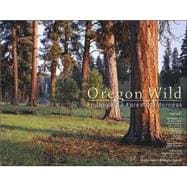
| A brief natural history of Oregon's forests | p. 1 |
| A brief unnatural history of Oregon's forests | p. 35 |
| A brief political history of Oregon's wilderness protections | p. 48 |
| A brief political future for Oregon's forest wilderness | p. 64 |
| A long-term vision for a wild Oregon | p. 79 |
| Home to Oregon's rainforests : coast range ecoregion | p. 77 |
| World class biodiversity : Klamath Mountains ecoregion | p. 98 |
| Young volcanoes and old forests : Cascades ecoregion | p. 115 |
| Dry open forests : East Cascades slopes and foothills ecoregion | p. 154 |
| Neither Cascades nor Rockies, but with attributes of both : Blue Mountains ecoregion | p. 172 |
| National wilderness preservation system in Oregon | p. 216 |
| Protected and protectable Oregon forest wilderness | p. 219 |
| National wild and scenic rivers system in Oregon | p. 221 |
| Other Congressional conservation designations in Oregon | p. 224 |
| Enjoying Oregon's unprotected forest wilderness | p. 225 |
| How you can help save Oregon's wilderness | p. 226 |
| Table of Contents provided by Blackwell. All Rights Reserved. |
The New copy of this book will include any supplemental materials advertised. Please check the title of the book to determine if it should include any access cards, study guides, lab manuals, CDs, etc.
The Used, Rental and eBook copies of this book are not guaranteed to include any supplemental materials. Typically, only the book itself is included. This is true even if the title states it includes any access cards, study guides, lab manuals, CDs, etc.